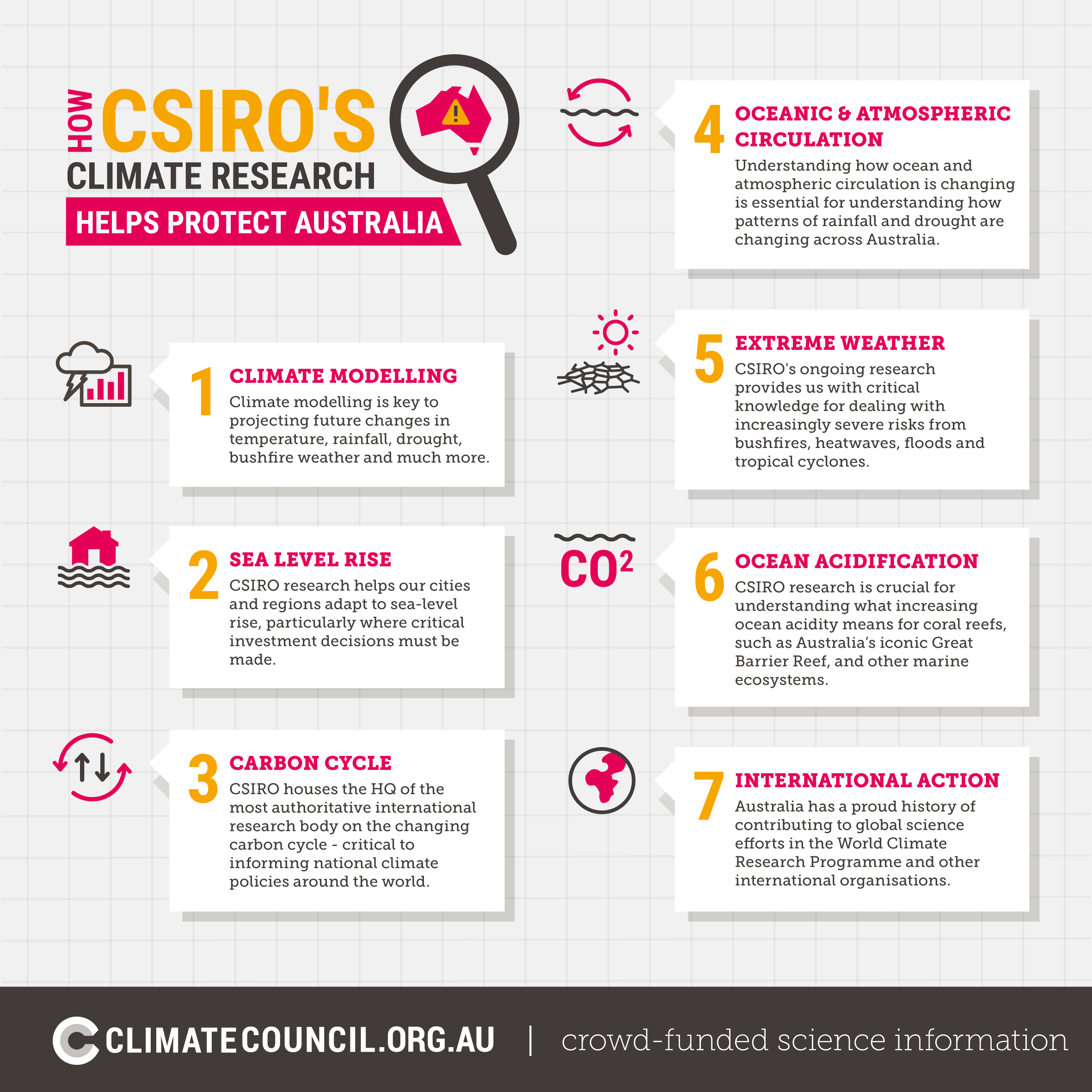This morning we released our latest report Flying Blind: Navigating Climate Change without the CSIRO.
We’ve received some common questions from our community in response to the report, so here are the answers from Prof. Will Steffen:
1. There are no cuts to CSIRO climate science – isn’t the money being put towards other areas of climate research instead?
There are clear cuts to the CSIRO’s climate science capacity: over 100 jobs are planned to be cut from the agency’s climate science staff.
CSIRO needs this staffing capacity to undertake vital research like climate model development, improving sea level rise projections and their underpinning processes, understanding the carbon cycle, tracking how oceanic and atmospheric circulation is changing, monitoring the changing nature of extreme weather events, researching ocean acidification and regularly updating greenhouse gas data.
Put simply, we can’t accurately or effectively mitigate or adapt to climate change without the most up-to-date climate science, which includes ongoing improvements in understanding how the climate is changing through observations, process studies, analyses, model development, synthesis and integration, and tailoring knowledge to the needs of user groups.
To be clear, in a rapidly changing climate where the nature of risks is constantly changing, ongoing research is required to continually improve our knowledge base. It is essential to understand and monitor how the climate is changing in order to ensure we understand the evolving nature and extent of the challenge facing Australia. This is why it makes no sense to say that it is time to shift money towards other areas like forecasting instead. That would leave us flying blind, trying to respond to a problem without the constantly updating data and process understanding that we need to track and understand the problem.
Check out our infographic that outlines how CSIRO’s climate research helps protect Australia:

2) Can’t other organisations, like the Bureau of Meteorology (BoM), just take on the workload from the CSIRO?
No. BoM cannot, and should not be expected to, take on the workload created by the CSIRO cuts.
The CSIRO, BoM and the universities all contribute to climate science in different, complementary ways – and rely on each other to provide mutual support for the research.
BoM focuses strongly on long-term observations of the climate and water systems, and provides short-to-medium range forecasting. The modelling framework that is used by BoM is essentially the same weather/climate model structure that is also used by the CSIRO for multi-decadal and century-scale projections. However, that model framework is continuously developed and improved primarily by CSIRO scientists, drawing on BoM observations and fundamental process studies carried out at the universities.
It must be emphasised that CSIRO plays the leading role in model development and improvement. Scientific capacity in all three primary sectors of the Australian climate science community – BoM, CSIRO and the universities – has not been able to keep up with the demand for new understanding due to resource constraints, despite the urgent need for a better understanding of climate change.
Put another way, there is absolutely no “slack” in the system that can take on the enormous workload that will appear from the CSIRO cuts, either in BoM or in the universities. This is capacity lost, not capacity that can be taken up elsewhere under existing resourcing.
Read more in our report: Flying Blind: Navigating Climate Change without the CSIRO.